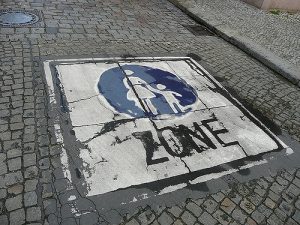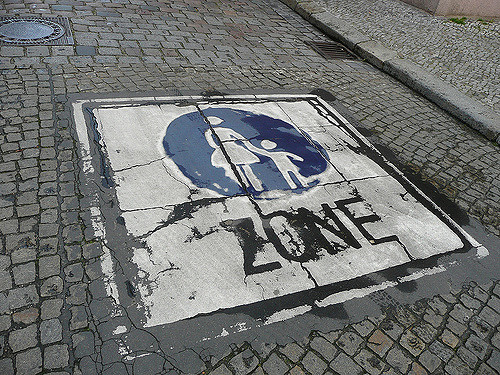
Image Credit: Metro Centric
When we start a negotiation, we are filled with hope that by using our negotiation styles and negotiating techniques we’ll be able to eventually walk away with a deal. However, during every negotiation we are faced with two possible mistakes we can make. The first is that we end up walking away from a deal that we should have agreed to. The other is that we end up agreeing to a deal that we should never have agreed to. How can we avoid making both of these errors?
Why We Don’t Get The Deal That We Want
In negotiating there is a situation that is called “the agreement trap”. This refers to a situation in which we are all to willing to agree to a deal that is worse than the best alternative that we have to reaching a deal with the other side. We can fall into the agreement trap for a number of different reasons. First, one side may successfully hide the fact that a proposed deal would not be in the other side’s best interest. A classic example of this occurs when a vendor attempts to overcharge their customer for a service that they will be providing.
Something else that can cause us to not be able to reach the deal that we’d like to have is because of our investment in the deal. As negotiators we may be reluctant to walk away from a deal that is not well-suited for us due to the significant time, money, and energy we’ve invested in the negotiation process. When this happens, it is given the name “escalation of commitment”. Because past negotiation costs cannot be recovered, the experts tell us that we shouldn’t consider them when deciding whether to commit further in a negotiation. Even though we may realize that we need to let our investment just go, the research that has been done tells us that unfortunately we will be driven to try to recoup our losses.
Many people don’t realize just how important a role relationships play in negotiations. At times we may feel as though we are in competition with the other side of the table, but it is entirely possible that over the course of the negotiations a strong bond can develop between us and them. This bond can be a good thing, but when it comes to getting the deal that we want it may turn out to be a hindrance. During the course of the negotiations we may have a desire to strengthen our relationship with the other side. However, because of this desire we may not be able to realize that we really should be walking away from this negotiation.
How To Use A ZOPA
So how, as negotiators, can we possibly avoid the two challenges of any negotiation where we are faced with possibly walking away from a good deal or accepting a bad deal? It turns that that the solution starts the same way that most negotiating solutions start: we need to make sure that we are thoroughly prepared for our next negotiation. This is going to include ensuring that we have an accurate understanding of our ZOPA: Zone Of Possible Agreement.
Where to start? Your ZOPA analysis should begin with a consideration of your best alternative to a negotiated agreement, or BATNA. Your BATNA is the course of action you would take if you do not reach agreement in the current negotiation. An example of this would be if you received a job offer that was for less than you were willing to accept. In this case you could seek out other job offers, work for yourself, or even go back to school. Your BATNA is really the only standard which can protect you both from accepting terms that are too unfavorable and from rejecting terms it would be in your interest to accept.
In addition, you are going to have to take the time to analyze the other party’s BATNA. By exploring the other party’s alternatives you can gain a realistic sense of what to expect from the negotiation. BATNA analysis helps you determine each party’s reservation point, or walkaway point, in your negotiation. If there is a set of resolutions that both parties would prefer over impasse, then a ZOPA exists, and it would be optimal for you to reach a settlement. If, by contrast, there is no overlap between the two (or more) parties’ reservation points then no ZOPA exists, and both sides would be better off pursuing their BATNAs. Through a rational analysis of the ZOPA in negotiation, you will be better equipped to avoid the traps of reaching agreement for agreement’s sake.
What All Of This Means For You
Negotiating is not an easy thing to do. During any principled negotiation we are always running the risk of making mistakes. The two biggest errors that we are most concerned about is walking away from are a good deal or agreeing to a bad deal. We need to make sure that we can detect when we are in these situations and make sure that we don’t do something that we’ll end up regretting.
When we are engaged in a negotiation, we can find ourselves falling into what is called an agreement trap. The agreement trap occurs when we find ourselves being willing to agree to a deal that is worst than what our best alternative to reaching a deal with the other side is. Another reason that we may agree to a deal that we should not is that we start to feel that we have invested so much into reaching a deal that we are hesitant to walk away from it. Another a reason that we may agree to a bad deal would be because we want to further our relationship with the other side. In order to make sure that we don’t make mistakes in negotiating, we are going to have to do our homework and make sure that we know what our ZOPA (Zone Of Possible Agreement) is. This will require that we start out by making sure that we know what our best alternative to a negotiated agreement, or BATNA is. You also have to make sure that you know what the other side’s BATNA is. Once you know this, you’ll be able to determine what the ZOPA for this negotiation is and how you can reach a deal with the other side.
The reason that we are willing to spend the time working on a negotiation is that we want to be able to reach a deal with the other side. We want to make sure that we don’t agree to a deal that will turn out to be a bad deal for us. If we can determine what the ZOPA is for our next negotiation, then we’ll be able to identify the areas where we can reach a deal with the other side that will benefit both of us.
– Dr. Jim Anderson
Blue Elephant Consulting –
Your Source For Real World Negotiating Skills™
Question For You: If you determine that there is no ZOPA for a negotiation, is there anything that you can do to in order to create one?
![]() Click here to get automatic updates when The Accidental Negotiator Blog is updated.
Click here to get automatic updates when The Accidental Negotiator Blog is updated.
P.S.: Free subscriptions to The Accidental Negotiator Newsletter are now available. Learn what you need to know to do the job. Subscribe now: Click Here!
What We’ll Be Talking About Next Time
The next time that you start a negotiation, what will be running through your mind? If you are like most of us, you are excited to get started and you have a fairly clear idea what negotiation styles and negotiating techniques you’ll be using to get what you want out of this negotiation. However, have you really done your homework? If you want your next negotiation to be successful, then what you do before the negotiation starts may determine how it turns out.

